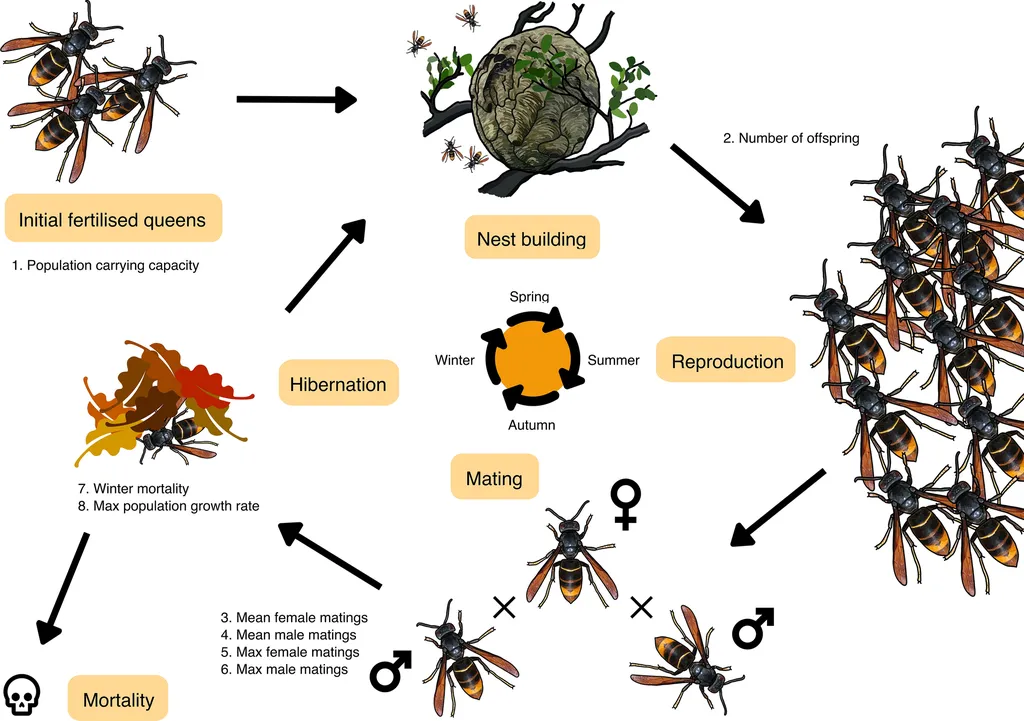In the world of agricultural pest control, a tiny wasp named Leptomastidea bifasciata is making a big splash. Researchers have recently sequenced and annotated its complete mitochondrial genome, a breakthrough that could have significant implications for the energy sector, particularly in bioenergy and biopesticide development. The study, led by Zhi-Peng Chen from the College of Horticulture and Landscape at Tianjin Agricultural University in China, was published in the journal ‘Mitochondrial DNA. Part B. Resources’, which translates to ‘Mitochondrial DNA. Part B. Resources’ in English.
Leptomastidea bifasciata is a parasitoid wasp, meaning it lays its eggs inside or on the body of other insects, ultimately killing its host. This particular species targets mealybugs, which are notorious pests in agricultural and forestry settings. By understanding the genetic makeup of L. bifasciata, scientists can better harness its pest-control capabilities.
The mitochondrial genome of L. bifasciata is 15,768 base pairs long and contains 13 protein-coding genes, 22 transfer RNAs, and 2 ribosomal RNAs. Notably, all 13 protein-coding genes start with ATN (ATT, ATG, ATA) and mostly end with TAA, except for the NADH dehydrogenase subunit 1 (ND1) gene, which ends with TAG. This genetic information is crucial for understanding the wasp’s biology and its potential for pest control.
“By decoding the mitochondrial genome of L. bifasciata, we’ve unlocked a treasure trove of genetic information that can help us develop more effective and sustainable pest control methods,” said Chen. “This research is a significant step forward in our understanding of this important parasitoid wasp.”
The study also conducted a phylogenetic analysis, which showed that L. bifasciata is closely related to the genus Anagyrus. This information can help scientists better understand the evolutionary relationships between different species of parasitoid wasps and how they might be used in biological control programs.
The implications for the energy sector are particularly exciting. As the world seeks to reduce its reliance on fossil fuels, bioenergy derived from agricultural and forestry waste is becoming increasingly important. However, pests like mealybugs can significantly reduce crop yields and the availability of biomass for bioenergy production. By using parasitoid wasps like L. bifasciata to control these pests, farmers can increase their yields and contribute to a more sustainable energy future.
“This research is not just about understanding the genetics of a tiny wasp,” said Chen. “It’s about harnessing the power of nature to create a more sustainable and energy-efficient future.”
The study published in ‘Mitochondrial DNA. Part B. Resources’ is a significant step forward in our understanding of L. bifasciata and its potential for pest control. As we continue to explore the genetic makeup of these important insects, we can expect to see even more innovative and sustainable solutions for pest control and bioenergy production. The future of agriculture and energy is looking brighter, one tiny wasp at a time.

